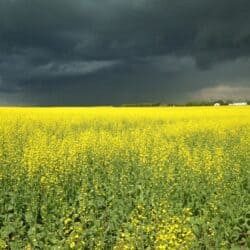Fair trade, as most northern consumers think of it, began after WWII when Christian missionary and nonprofit charities imported craft products made by their southern partners, including Greek and Italian communities, to sell in northern Europe and the USA. It has since evolved into a much more complex “sector,” involving thousands of products and tens or even hundreds of thousands of volunteer, commercial, and hybrid distribution points and networks that reach into a significant percentage of northern and even some southern markets.
In addition to providing income and “fair” prices for southern producers, fair trade has generally had the objective of raising northern awareness of working conditions and the unequal and unjust trading and power relations between the north and the south. The introduction of fair trade products from the south, and even from the north, together with rapid changes in electronic communications and commercial sourcing of everyday products from Africa, Asia, and Latin America under globalization, has expanded the public’s awareness of the workers and producers and working conditions behind our daily consumption of food and other staple products. Examples of exploitation and injustice are quickly transmitted into our living rooms daily and, while the relationships are complex, the continuing growth in fair trade product sales of some 15% a year is undoubtedly a result of increased public awareness that reaches as much as 70% in some countries.
The mix between economics and politics, and between pragmatism and demands for radical change, varies widely across the many actors who share a still relatively common focus on the need for major changes in the nature of north/south relations, with products such as coffee or handbags as concrete, daily present symbols of those relationships.
Moving from charity to “trade not aid” and from organized small producers to large estates and industrial production, fair trade has evolved as the process of globalization has evolved. From small locally operated and then networked “third-world” shops to mainstream supermarkets and retail outlets, fair trade has gained impressive market awareness and presence, although sales remain a microscopic fraction of international transactions.
In Canada, fair trade imports began with the Mennonite’s Self Help Crafts in the 1970s. A short lived Oxfam Canada craft store, modeled on Oxfam UK craft and used clothing shops, operated in Ottawa in the mid-1970s, and “solidarity” coffee sales began in 1980 by four United-Church-associated individuals selling Nicaraguan coffee under the name Bridgehead. Oxfam Canada purchased Bridgehead in 1986 when the individuals’ working capital limits prevented sales growth, and it expanded to several million dollars in sales of crafts and coffee. Business difficulties forced the closure of Oxfam’s Bridgehead in 2000, and the name was sold to an individual who restructured the company into a successful chain of coffee shops in Ottawa. There are now over 200 companies licensed by Transfair Canada selling over 3500 SKUs (stock keeping units), or separately identified or packaged fair trade products, including many new products such as wines, nuts, bananas, footballs, and many other commodities.
One interesting anecdote illustrating the growing complexity of fair trade came out of a 1995 Smithsonian Institute conference in Washington on “bird friendly” coffee. Learning that the precipitous drop in the US Baltimore Oriole population was related to the clearing of Costa Rican rainforest to expand full-sun varieties of Robusta coffee, the Smithsonian brought together coffee retailers, roasters, importers, and fair traders to seek solutions to this problem. The debates over plantation vs. small producer, “shade” grown vs. organic, and farmer friendly vs. bird friendly pitted fair traders and environmentalists against profit-maximizing/cost-reducing commercial firms, sowing consumer confusion over whose claims about impact deserved their purchases. This was an early example of “greenwashing,” which is now unfortunately so common in many sectors.
World-wide, there are now 19 national fair trade labeling or product certification bodies and three producer networks affiliated with FLO, Fairtrade Labelling Organizations International, with €3.3 billion (C$4.4B) in certified fair trade retail sales. More than 350 organizational members of the World Fair Trade Organization (WFTO) sell some C$2.3 billion in products from 110 million artisans, farmers, growers, producers, and supporters, 30 million of which are small-scale producers.
Within the evolution of fair trade over some 50-60 years, objectives have moved from a simple focus on “fair” prices of both commodities and individual “craft” products (over which there is also debate on what is “fair”) to include overall income and working conditions and other supply chain issues. The expansion of generally nonprofit fair trade mechanisms to include fair trade labels and certification for commercial products in 1989 was a major step, which has greatly expanded the number of products and the market presence of fair trade. It has also introduced operational issues around complex supply-chain criteria, monitoring, ISO standards, certification, and accreditation of actors, which are shared with the broader corporate social responsibility (CSR) “sector.” Fair trade label experiences in supply-chain monitoring have been shared with other efforts such as the forest and marine stewardship councils, and this year a FLO partnership with the Alliance for Responsible Mining has brought social, environmental, and economic standards to gold products. A recent CBC radio documentary highlighted working conditions in the mining of rare minerals crucial to cell phone manufacturing, yet another example of the growing complexity of “fair trade” relations.
As with many human endeavours, fair trade has generated its share of divergent opinions about criteria, standards, strategies, tactics, and partnership relations. The issues are many and include the problems of covering costs of import sales; quality and price; commercial volumes and logistics vs. ad hoc purchases and product selection; volunteers vs. “professional” staff; and political correctness vs. gradual impact via sales volumes and, by implication, greater public awareness.
Differences often revolve around a common theme of reform vs. “revolution,” with some actors working within markets to change practices while trying to move the goal posts, and others seeing fair trade income as a temporary source of investment to prepare for a withdrawal from markets altogether.
As global warming and climate change force us to reduce our consumption of fossil fuels, long-distance trade, even fairly practiced, is likely to decrease. The future, for this writer at least, lies in our finding a way to live well but not better, and a reduced consumption of non-local products. Fair trade as a bridge to southern producers, many of whom have retained a commitment to the stewardship of land and resources and to a simpler material way of life, could play a role in teaching us to overcome our northern dependence on economic growth and “stuff.” However, the socio-cultural-economic paradigm shift that will be needed to reduce overall planetary consumption while still increasing investment in southern basic needs will require social innovations that dwarf the fair trade movement’s impressive yet limited growth.
Bob Thomson was the founder and Managing Director of TransFair Canada, (1994-2000), Canadian affiliate of Fairtrade Labelling Organizations International (FLO), a 19-nation certification body promoting a fair trade label for coffee and other foods commodities. He has a degree in Civil Engineering and an M.A. in International Affairs. He has lived and worked in Peru, the Caribbean, France, and Canada, and has extensive experience with NGO program and project evaluations, fair trade producer support, nonprofit governance, housing co-operatives, and computer assisted communications for civil society. Email: bthomson@ web.ca .


